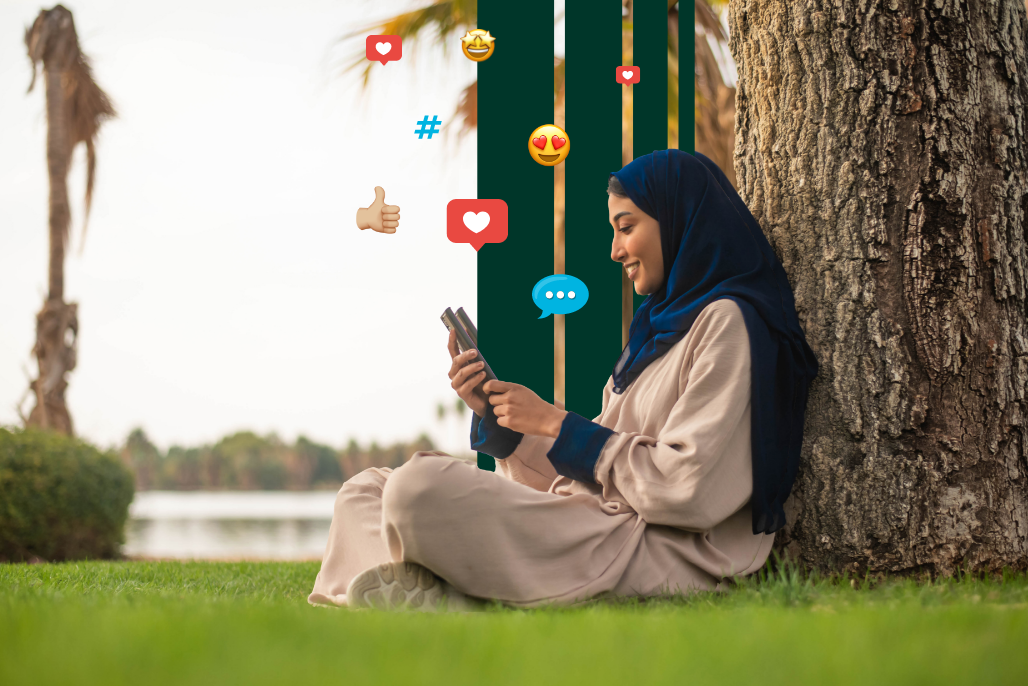
In our era dominated by digital communication, we may believe that words are all that matter. However, the truth is that a significant portion of our communication occurs subconsciously through digital body language. How can we utilize this hidden language to build stronger, more authentic relationships in our digital world?
Non-verbal communication is a fascinating aspect of human interaction. It encompasses a wide range of cues, from facial expressions and gestures to posture and tone of voice. While words may convey explicit message, non-verbal signals often reveal underlying emotions, attitudes, and intentions.
The 7-38-55 Rule
A popular theory, often attributed to psychologist "Albert Mehrabian", suggests that communication consists of:
55%: Body Language
38%: Tone of Voice
7%: Words
While this specific breakdown may be debated, it emphasizes the significant impact of nonverbal cues in direct, in-person communication. Nonverbal cues are the gestures, movements, and expressions we use, sometimes without realizing it, that convey meanings and nuances potentially more powerful than the spoken words. We know this intuitively, of course. For instance, we can tell if someone is engaged with us based on their eye contact, facial expressions, body posture, and vocal tone. What we may not realize is that all of this is absent in digital communication.
Digital Body Language
In today's fast-paced digital world, effective communication has become more crucial than ever before. With numerous channels at our disposal—social media, email, instant messaging, and live streaming platforms—it can be easy to get lost amidst the noise.
There are two parallel paths you must follow to convey your message effectively: the emotional path and the intellectual path. However, it is the emotional path that we lack in digital media due to the absence of non-verbal cues. This is why author Erica Dhawan wrote the book "Digital Body Language" where she emphasized the importance of building digital body language to enhance the effectiveness of digital communication, which has become an essential part of our daily lives.
One of her statements resonated with me: "Many of our digital battles would stop if we took a deep breath, refused to respond, and assumed positive intent."
How many times have misunderstandings arisen between you and a family member or coworker simply because you failed to include an "emoji" with your message? The recipient interpreted your message as angry or harsh, despite you writing it calmly and without any intention of offense.
This is what we mean when we say we need to build effective digital communication that enables us to understand others more clearly and avoid these daily conflicts as our need for rapid digital communication continues to grow day by day.
How do we build effective digital communication?
The golden rule of digital communication? "Never underestimate the power of emojis or GIFs!" Incorporating emojis and animated images into texts adds a personal touch and enhances the effectiveness of communication. Imagine if every word could convey our true emotions – that’s precisely what emojis do; they translate our feelings into a visual language.
Remember to listen intently to what others share, even if it’s through a screen. Engaging with their posts, whether by liking, commenting, or sharing, demonstrates appreciation for their opinions and ideas, fostering a spirit of collaboration and community engagement.
Words alone can be deceptive. Voice is the true key to understanding the genuine meaning behind them. Try recording short, straightforward voice messages to convey your thoughts clearly and swiftly, especially for those with busy schedules. Voice adds a personal touch and ensures your message is received as intended for clear digital interaction.
Punctuation marks are like musical notes for words, infusing them with vibrancy and meaning. We interpret a message filled with question marks, such as “??????”, as someone shouting in our face without context. Therefore, we must use punctuation wisely to convey our message clearly and effectively, avoiding misunderstandings that could strain relationships.
Remember the importance of timeliness; responding promptly to those around us significantly contributes to strengthening our digital bonds.
Be aware of cultural differences to avoid misunderstandings that may occur with others in the digital world. While we may be well-versed in Saudi culture, we may be unfamiliar with the cultures of neighboring countries.
Stay up to date with new developments and updates. Every day, we wake up to new updates in social media apps and tools that facilitate and humanize communication. “Humanization is a process of gradual transformation or development in which an organism, especially a living organism, approaches human characteristics or human behaviors. This transformation may be in mental, emotional, social, or even in outward appearance in some cases. For instance, the latest feature added to the WhatsApp app allows groups to plan upcoming events, scheduling the location, time, number of attendees, and other details.
New Terminology:
Generation Z utilizes a novel digital language across social media platforms. Familiarize yourself with the meanings and usages to effectively communicate with them.
Radical Changes in the Workplace After the Coronavirus Pandemic: Focus on Remote Work and Virtual Meetings
The workplace underwent a radical transformation after the coronavirus pandemic, with practices such as remote work and virtual meetings becoming an integral part of the professional lives of many. The idea of remote work transitioned from being a limited option to a familiar and accepted reality in numerous companies and institutions.
Based on these changes that will continue to evolve over time, you should ensure the following in your virtual meetings:
To build strong relationships:
By following these tips, you can enhance your digital communication skills and build stronger connections, whether personal or professional.
Ultimately, effective communication in the digital age is about striking the right balance between technology and human interaction. We have a wealth of tools at our disposal - email, social media, instant messaging - yet sometimes we feel more disconnected than ever. To communicate effectively through your messages, be clear and concise, while highlighting your human side to make your remote messages more personal.